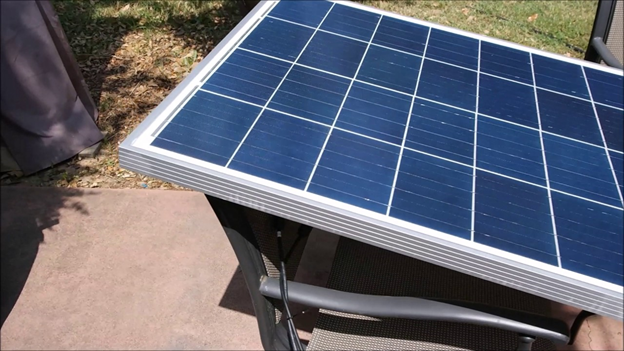Indicators on Best Solar Panels You Need To Know
Wiki Article
Best Solar Panels for Dummies
Table of ContentsThe 2-Minute Rule for Best Solar PanelsNot known Incorrect Statements About Best Solar Panels Fascination About Best Solar PanelsNot known Details About Best Solar Panels 8 Easy Facts About Best Solar Panels DescribedBest Solar Panels for Beginners
Key takeaways There are three various kinds of solar panels: monocrystalline, polycrystalline, as well as thin movie (Best solar panels). Monocrystalline solar panels are very reliable and have a streamlined style, but come at a greater rate point than various other photovoltaic panels. Polycrystalline photovoltaic panels are less costly than monocrystalline panels, however, they are less effective as well as aren't as cosmetically pleasing.
Because polycrystalline cells have several silicon cells, the electrons can not move as easily and also consequently, lower the efficiency of the panel. The reduced performance of polycrystalline panels additionally indicates they often tend to have a reduced power output than monocrystalline panels, generally ranging between 240 watts and 300 watts.
6 Simple Techniques For Best Solar Panels


The temperature coefficient tells you just how a lot the power output will lower by for each 1 * C over 25 * C the panel obtains. The standard temperature level coefficient for mono and also polycrystalline panels typically drops somewhere in between -0. 3% and also -0. 5% per * C. Thin movie panels on the various other hand, are around -0.
In truth, with some slim film panels, it's tough to even see the individual cells within the panel. They likewise have a tendency to have less circuitry and also busbars, meaning there's much less white room. However, due to the fact that they are so ineffective, you would need to cover your whole roofing system in slim film panels - which might or might not be your style.
Getting The Best Solar Panels To Work
The means monocrystalline solar cells are shaped reasons there to be fairly a little bit of white area on the panel. Some makers have functioned around this with black packing or forming the cells in a different way, however these visual changes can impact both the rate and efficiency of the panels. Overall, monocrystalline panels still look smooth, yet they're a bit more obvious than thin film panels.
We do not advise slim film solar panels for property installments - their efficiency as well as sturdiness don't make the inexpensive worth it, and also it's not likely you'll have nearly sufficient space to set up the number of slim movie panels you would require to cover your house power use. Elements to think about besides solar panel type There are 2 points we here at Solar, Reviews think are a lot more crucial than solar PV cell kind when selecting panels for your house: the brand name of solar panels and also finding the appropriate solar installer (Best solar panels).
A solar panel system will be on your roof for at least 25 years, so you require an like it installer you can trust for two-plus years!
Getting My Best Solar Panels To Work
Since they are made from pure silicon, they can be conveniently identified by their dark black shade. Making use of pure silicon likewise makes monocrystalline panels one of the most space-efficient as well as longest-lasting amongst all 3 photovoltaic panel types. This why not try here comes at a cost a great deal of silicon is wasted to create one monocrystalline cell, occasionally getting to over 50%.Polycrystalline photovoltaic panels As the name suggests, these come from various silicon crystals as opposed to one. The silicon pieces are thawed as well as put into a square mold. This makes polycrystalline cells much extra budget-friendly given that there is minimal waste, as well as gives them that particular square shape. Nonetheless, this also makes them much less effective in regards to energy conversion as well as area, considering that their silicon purity and construction are lower than monocrystalline panels.
Each panel does not require a structure backing, making them lighter as well as much easier to mount. Unlike crystalline silicon panels that are available in standardized sizes of 60, Learn More Here 72, and also 96-cell counts, thin-film panels can can be found in various sizes to suit certain demands. They are much less efficient than normal silicon solar panels.
The smart Trick of Best Solar Panels That Nobody is Discussing
Unlike mono-and polycrystalline solar cells, the silicon is not structured on the molecular degree. This is why a-Si panels are fit for applications that call for extremely little power, such as pocket calculators.The mix of these aspects leads to the greatest efficiency amongst thin-panel kinds, though still not as efficient as crystalline silicon panels. Monocrystalline panels have an effectiveness rating over 20%. PERC panels add an added 5% efficiency thanks to their passivation layer. Polycrystalline panels float somewhere between 15-17%. CIGS panels have a performance variety of 13-15%.
50 $0. 50 $0. 50 Note that these figures don't consist of the expense of installment as well as labor.
The Best Solar Panels Diaries
Monocrystalline and polycrystalline panels have a temperature level coefficient between -0. 5%/ C, while thin-film panels are more detailed to -0.Report this wiki page